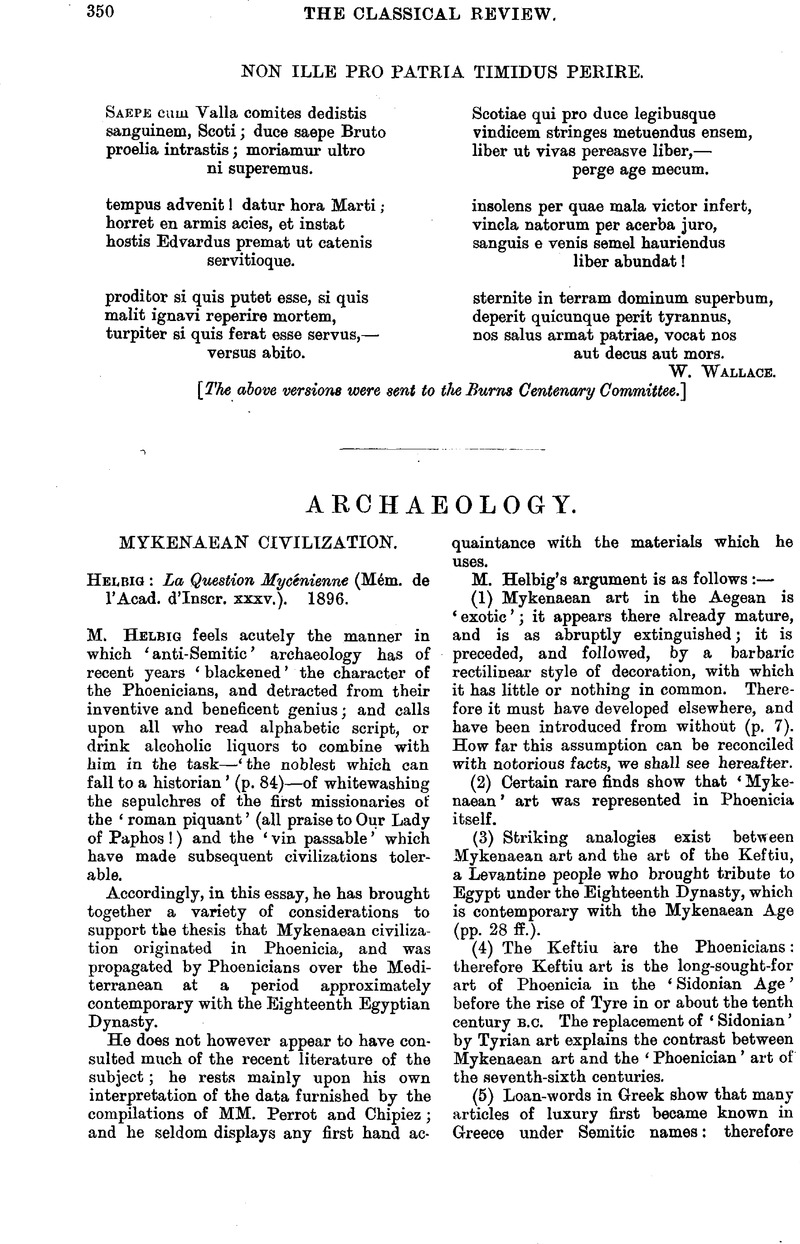No CrossRef data available.
Published online by Cambridge University Press: 27 October 2009

page 351 note 1 Here Mykenaean art has a continuous and indigenous descent from the culture of the early Bronze Age, and passes by insensible degrees back to a point, barely removed from the end of the Neolithic Age, where it joins, through the Hissarlik type, with the Cypriote Bronze Age culture, which however pursues a very different and peculiar career. Intermediate, and by no means early stages of this development can now be dated, on Cretan evidence, to the time of the Twelfth Egyptian Dynasty (Evans, ‘Cretan Pictographs,’ p. 57 ff.; J.H.S. xiv. 326 ff.; Myres, Proc. Soc. Antiq. 2nd ser. xv. p. 351 ff.; Mariani, Mon. Antichi, 1896): and consequently the beginning of the process must far antedate any known data for Phoenician industry and commerce.
page 355 note 1 Fig. 13.= Perrot. vi. fig. 351 = Tσοντας. Mυκναι, PL xi. M. Helbig refers to this as from ‘Abbia,’ following (as usual) M. Perrot. M. Tsountas always refers to it by the more accurate place-name Kμπος: Aβια is the ‘demo’ of Lakonia in which Kμπος lies.
page 356 note 1 Evans, J.H.S. xiv. 367 ff.
page 356 note 2 Od. xiv. 288 ff. is not reckoned, because the voyage was to be to Libya. 1. 295.
To send this article to your Kindle, first ensure no-reply@cambridge.org is added to your Approved Personal Document E-mail List under your Personal Document Settings on the Manage Your Content and Devices page of your Amazon account. Then enter the ‘name’ part of your Kindle email address below. Find out more about sending to your Kindle. Find out more about saving to your Kindle.
Note you can select to save to either the @free.kindle.com or @kindle.com variations. ‘@free.kindle.com’ emails are free but can only be saved to your device when it is connected to wi-fi. ‘@kindle.com’ emails can be delivered even when you are not connected to wi-fi, but note that service fees apply.
Find out more about the Kindle Personal Document Service.
To save this article to your Dropbox account, please select one or more formats and confirm that you agree to abide by our usage policies. If this is the first time you used this feature, you will be asked to authorise Cambridge Core to connect with your Dropbox account. Find out more about saving content to Dropbox.
To save this article to your Google Drive account, please select one or more formats and confirm that you agree to abide by our usage policies. If this is the first time you used this feature, you will be asked to authorise Cambridge Core to connect with your Google Drive account. Find out more about saving content to Google Drive.